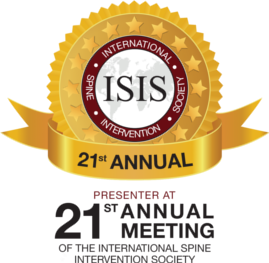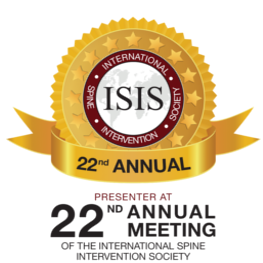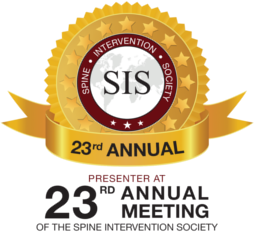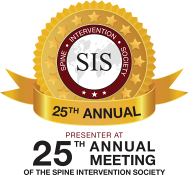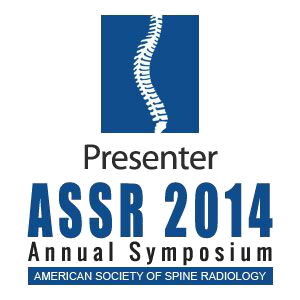When chronic pain creeps into your life, it could affect your performance of the simplest of chores. Constant discomfort could wear you down, whether you experience it on your face, neck, or back.
If you are seeking a long-lasting solution for your nerve-related pain, consider undergoing the rhizotomy procedure. You should find an experienced neuro-interventional surgeon who focuses on using minimally invasive procedures. This blog explains how the rhizotomy procedure works, its benefits, and its risks.
An Overview of the Rhizotomy Procedure
A rhizotomy procedure is a type of surgery that involves cutting or damaging particular nerve fibers carrying pain signals to stop transmitting the signals. The procedure targets nerves that carry the pain message to your brain and damages them to find relief from chronic and debilitating pain.
Unlike other surgeries, rhizotomy is considered a minimally invasive procedure. Therefore, this procedure produces targeted, long-term results with minimal disruption to surrounding tissues. You undergo rhizotomy when in pain from spinal conditions like herniated discs or spinal stenosis. The procedure also works for facial nerve pain in conditions like trigeminal neuralgia.
Physicians and patients like rhizotomy because it can treat chronic pain when other treatments, such as medications, injections, and physical therapy, have failed. Rhizotomy is a minimally invasive solution that addresses the root of your pain directly and offers relief without necessitating extensive surgeries.
Types of Rhizotomy Procedures
The rhizotomy procedure entails many variations, each addressing a specific body section or pain condition. Your neuro-interventional surgery will advise on a tailored solution, depending on the nature of your pain and the nerves affected.
The major types of these procedures are:
-
Radiofrequency Ablation (RFA) Procedure
In this rhizotomy procedure, the surgeon uses heat from radio waves to destroy the nerve fibers that carry pain signals. With the help of contemporary imaging devices, your physician inserts a thin, needle-like probe close to the nerve. Once the probe is in place, radiofrequency energy heats and damages the nerve. RFAs are preferred for facet or sacroiliac joint pain because they are minimally invasive and have quick recovery times.
-
Endoscopic Procedure
With an endoscopic procedure, your doctor visualizes the affected nerves with a tiny camera called an endoscope before severing them. Like radiofrequency ablation, the endoscopic procedure is minimally invasive but involves more processes. For example, your surgeon has to make small incisions around the affected area to insert the endoscope and surgical instruments.
One advantage of this procedure is that your surgeon can directly observe the nerves and precisely target the fibers causing you pain. You should undergo this procedure if your pain is more complicated or involves multiple nerve pathways.
-
Glycerol/Glycerin Rhizotomy
Glycerol/glycerin rhizotomy involves injecting glycerol — a thick, viscous fluid into the affected nerve instead of using heat or instruments. Glycerol damages the problematic nerve and interrupts pain transmission.
The use of this rhizotomy procedure is common in the treatment of trigeminal neuralgia, a condition characterized by intense facial pain. Patients could prefer this procedure over the rest because it is minimally invasive. However, if you need complex surgery, you want to opt for another procedure, for example, an endoscopic procedure.
Difference Between A Rhizotomy And An Ablation
Many patients think rhizotomy and ablation are similar procedures. However, the difference between the two methods is how each method targets the nerves and how the technology works behind it.
-
Rhizotomy
A rhizotomy is a specific term for a surgical severing or damaging of a nerve fiber to disrupt pain signals. The procedure could vary with the type of rhizotomy your surgeon recommends, for example, injecting chemicals such as glycerol or applying heat through radiofrequency waves.
-
Radiofrequency Ablation
Radiofrequency ablation is a more accurate type of rhizotomy involving heat produced by radiofrequency waves to destroy nerve tissue.
Every radiofrequency ablation is a rhizotomy, but not every rhizotomy uses radiofrequency energy. Rhizotomy is a much broader term that includes a variety of ways to stop nerve pain, whereas ablation is precise to one method of nerve disruption.
The Purpose of a Rhizotomy Procedure
The main objective of a rhizotomy procedure is to block pain-transmitting nerve pathways permanently and allow long-lasting relief from chronic pain. You are eligible to undergo this procedure if you have any of the conditions above, like degenerative disc disease, spinal stenosis, or even facial pain as a result of trigeminal neuralgia.
With a rhizotomy, you will get a different type of pain medication, one that eliminates the cause (or root) of your pain and doesn’t have any side effects or dependency risks like temporary pain medicines do.
Medical Conditions That Can be Treated Using a Rhizotomy Procedure
Rhizotomy procedures can be used to treat various medical conditions, most often those of nerve-related chronic pain. There are many forms of rhizotomy; each form targets different body areas and specific nerve fibers to reduce pain and improve your quality of life. Your doctor may suggest one of the following rhizotomy-specialized treatments, depending on the source of your pain:
Trigeminal ganglion Rhizotomy
Trigeminal ganglion Rhizotomy is ideal for those suffering from trigeminal neuralgia. Trigeminal neuralgia is a disease that causes sudden, severe facial pain. Rhizotomy targets the trigeminal nerve, which controls sensation in the face.
This nerve can become hypersensitive, causing searing pain that feels like electric shocks. The procedure involves chemically treating or destroying the trigeminal nerve with radiofrequency waves to stop the pain signals from reaching your brain. Trigeminal ganglion rhizotomy is highly effective when other medications cannot offer pain relief.
Facet Rhizotomy
Facet rhizotomy relieves chronic neck and back pain secondary to facet joint arthritis or degenerative changes in the spine. Facet joints are small joints that connect the bones of your spine. If these joints become inflamed, the pain can persist in your neck and upper or lower back.
In this rhizotomy, radiofrequency energy disables the nerve branches that supply the facet joints and stops transmitting pain signals. This procedure is minimally invasive and can provide long-lasting relief, especially in those with facet joint syndrome.
Selective Dorsal Rhizotomy (SDR)
Surgeons use selective dorsal rhizotomy (SDR) in patients with spasticity, especially those with cerebral palsy. Spasticity describes contracted muscle spasms that slow and harden the body's movements.
With SDR, the surgeon cuts certain nerve fibers in the spinal cord that cause muscle spasticity to ensure greater control and flexibility in movement. The procedure is typically done in children with cerebral palsy, but it can also help adults with similar conditions by improving muscle tone and lowering involuntary muscle contractions.
How to Prepare for the procedure
Proper preparation ensures your rhizotomy procedure is successful and smooth. Before undergoing treatment, you must take a few steps to ensure your body is ready and reduce risks. Your healthcare provider will typically conduct a thorough preoperative assessment of your overall health and standard tests to determine your eligibility for the procedure.
Your doctor will first request that you undergo imaging tests, such as an MRI or CT scan, to see the affected area in more detail. These tests can confirm where the nerve is causing your pain and help your doctor determine where to target the procedure. The rhizotomy depends on the surgeon knowing exactly where to apply the treatment so that it is successful and the surrounding tissues are not affected.
Your doctor may then ask for blood tests to determine whether you have any underlying conditions that might affect your surgery or recovery, such as a clotting disorder, infection, or other health problem. These tests are essential to rule out problems and ensure you’re in the best condition for the procedure. Your doctor may also request a neurological examination based on your medical history to see how well nerves and muscles function.
Before your procedure, your doctor will also give you fasting instructions. Fasting means not eating or drinking anything for a time, usually six to eight hours before the procedure. It decreases the risk of aspiration, where stomach contents are accidentally introduced into your lungs during surgery. Also, if you are taking any medications, especially blood thinners or anti-inflammatory drugs, your doctor will tell you if you should stop taking them so there is not too much bleeding.
What Takes Place During Rhizotomy?
On the day you undergo a rhizotomy procedure, many steps occur. These steps ensure the procedure is error-free. The surgeon’s team will guide you through every stage to ensure your comfort.
The process begins with you being administered local anesthesia. That means you remain awake, and the only place you will feel anything is around where your nerves are being cut. The surgeon could recommend sedation or, in some cases, general anesthesia. Doctors administer general anesthesia if yours is a complex case and you are anxious about the procedure. However, the surgeon ensures the specific anesthesia matches your medical needs.
The doctor examines you before administering anesthesia and schedules you for a rhizotomy. They will monitor your blood pressure and heartbeat rate to ensure you follow the requisite preoperative instructions, such as fasting. You should fast for around 8 hours to prevent complications.
After preoperative checks, the doctor walks you to the waiting area. You spend a short time there as the medical team prepares the surgical room. A final check ensures you are stable and ready for the procedure.
Once in the operating room, the surgeon performs the rhizotomy procedure. They have the specialized imaging equipment and tools required for the procedure. Each procedure needs a unique environment, so the medical team sets the environment to maximize precision and safety. During the surgery, the medical staff will continue to monitor your vital signs, making sure your body is taking the anesthesia well and that you are as comfortable as possible.
During the Operation
At this stage, your surgeon will use advanced techniques to target and disable the problematic nerves causing you pain. The surgeon performs a precise procedure without damaging the surrounding tissues.
Your surgeon will use real-time imaging, usually via fluoroscopy or X-ray technology, to accurately identify the nerves that need to be treated. The surgeon will also stimulate the nerves to see if they are causing your pain. The stimulation might cause mild discomfort because the testing ensures the correct nerve is fixed without affecting the healthy ones.
Once the surgeon locates the problematic nerve(s), they destroy them using the predetermined method, that is, radiofrequency, endoscopic, or glycerol-based rhizotomy. Regarding the preferred method, the aim is to interfere with the nerve’s ability to transmit the pain signal to your brain.
What Happens After Rhizotomy Procedure?
After the operation, you might experience discomfort or an ache at the operation spot. The discomfort can be intense for certain people but not for everyone. You might feel a dull ache or manageable pain.
For example, if you undergo a facet rhizotomy, your back could feel tender as your body begins to heal. However, postoperative pain usually subsides between 1 and 2 weeks. The surgeon will give you instructions on managing your pain using prescribed painkillers or over-the-counter medicine.
After the anesthetic wears off, you may experience numbness or weakness in the treated area. Usually, this is a normal part of the healing process. You also schedule follow-up appointments to ensure the doctor monitors your recovery. The surgeon could recommend physical therapy or rehabilitation exercises to help you regain strength and flexibility. An added advantage of physical therapy is faster recovery and improved overall health.
Benefits of a Rhizotomy Procedure
Here are some benefits of a rhizotomy procedure.
Helping Relieve Pain
Rhizotomy helps relieve chronic pain conditions like facet joint pain, trigeminal neuralgia, or other nerve issues. Most patients report an impressive reduction of the pain intensity after the procedure—simple things like walking or bending over become much easier for some.
Rhizotomy may improve sleep quality, mobility, and a positive attitude. Reducing pain may also allow you to participate more easily in physical therapy or exercise programs, thus increasing your recovery and quality of life.
Enhanced Flexibility and Motion Range
Chronic pain is a major impediment to movement. Rhizotomy alleviates pain and can encourage more active living. After the procedure, you regain mobility and confidence in doing everyday things—activities like bending, stretching, or even lifting become more comfortable.
Flexibility is associated with a better quality of life. Walking without pain, going on a leisurely walk in the park, playing with your grandchildren, and helping you move around your house without pain make you much happier.
Reduced Spasticity in the Muscles
Conditions like multiple sclerosis, cerebral palsy, or spinal cord injury can cause spasticity—involuntary muscle contractions. These contractions are excruciating and debilitating, which prevents movement and makes simple everyday chores impossible.
Rhizotomy may selectively destroy the nerves causing this spasm and lessen its intensity. This results in smoother, more controlled movements, making typing on a keyboard or tying your shoes easier.
Eliminating spasticity may also improve posture and alignment and lessen the discomfort of tight muscles. Better muscle function could help you participate in physical therapy sessions and other exercises that strengthen and stabilize the involved muscles.
Rhizotomy is a Safe, Efficient, and Minimally Invasive Procedure
Rhizotomy carries a much lower risk of trauma to nearby tissues and only involves making tiny punctures. Because this procedure is minimally invasive, patient discomfort is lessened, and complication rates are reduced. There are fewer disruptions to your body’s structures, so the likelihood of infection, excessive bleeding, or other surgical risks is significantly reduced.
Risks and Possible Complications of Rhizotomy
Rhizotomy has several benefits, especially in pain reduction and overall wellness. However, some potential risks and complications could occur after a rhizotomy procedure. These include:
-
Allergic reactions
If your body considers a substance introduced during the procedure a threat, you may have an allergic reaction. This response can be mild, like a rash or an itch, or more severe, such as swelling, trouble breathing, or anaphylaxis, an emergency medical situation.
-
Nausea and dizziness.
These symptoms can result from the anesthesia, pain medication, or even stress related to the surgical procedure. Nausea can be mild, or it can be much more severe. It can feel like you are going to be sick. It may also occur from changes in blood pressure, the effects of anesthesia, or the body's reaction to pain.
-
Weakness or numbness
Destroyed nerves could inadvertently affect nearby nerve function, leading to sensations of weakness or numbness. You may find that the areas around the treated nerves differ from what they felt before. This change can reduce your ability to move the affected limb or region or decrease sensation in those areas.
-
Migraine or headache
Headaches can occur due to various factors related to the surgery itself. The stress of the procedure, the effects of anesthesia, and the body's response to surgical trauma can all contribute to headache development. Patients often describe these headaches as tension-type headaches or migraines. They are characterized by throbbing pain that may accompany other symptoms, such as nausea or sensitivity to light and sound.
Find a Rhizotomy Specialist Near Me
Living with chronic pain is not an experience anyone wishes for themselves. Neuro-interventional surgeons help alleviate this pain through rhizotomy procedures. This minimally invasive treatment involves damaging the nerve that sends the pain signals to the brain.
At LAMIS Institute, we have certified neuro-interventional surgeons who have performed several rhizotomy procedures. Depending on your pain severity, you can choose from many rhizotomy options. Contact us at 310-734-6088 to schedule a consultation if you are in the Los Angeles area.

